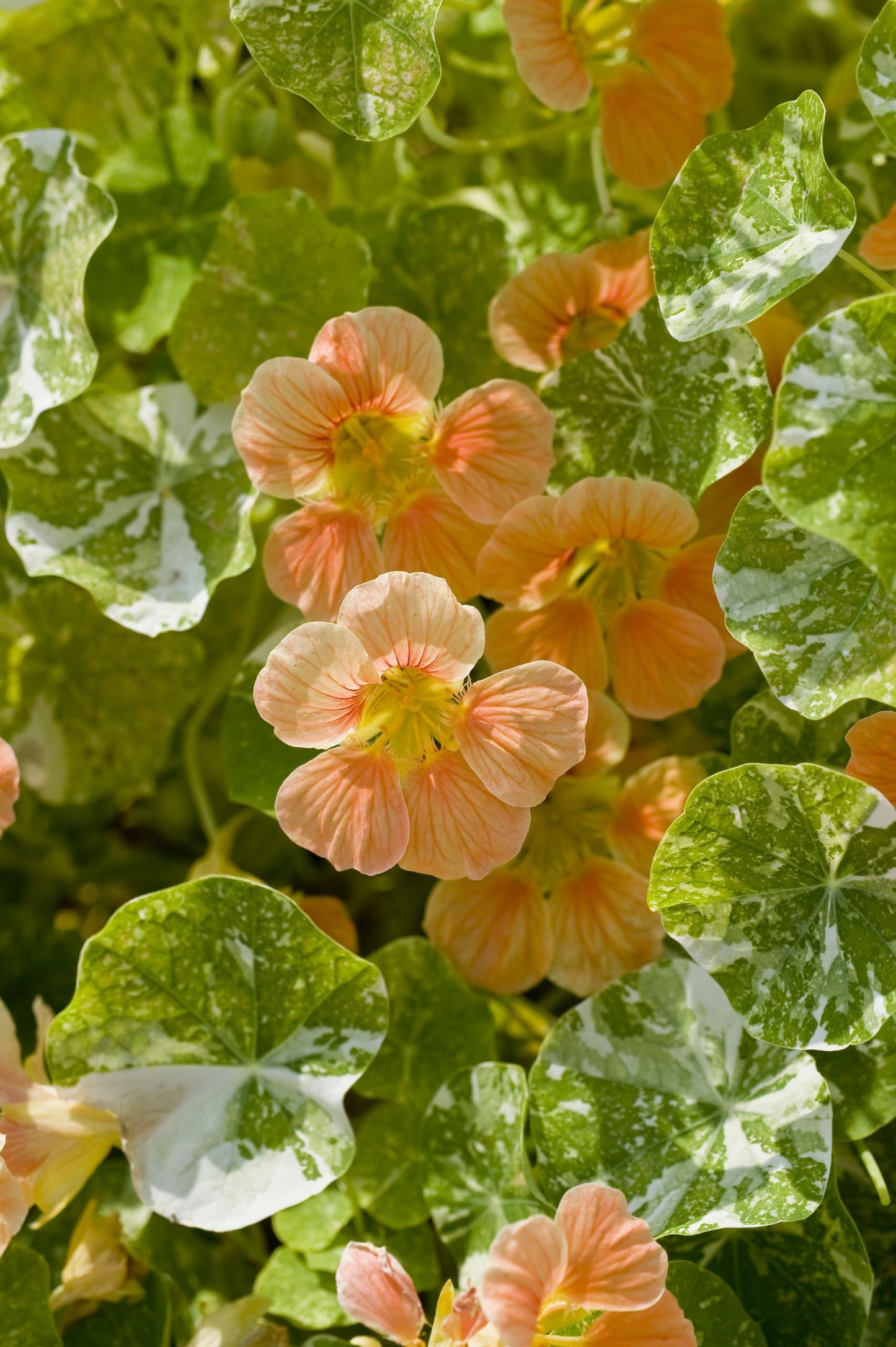Olive Seed Company
Nasturtium 'Tip Top Alaska'
Nasturtium 'Tip Top Alaska'
Couldn't load pickup availability
Tip Top Alaska Salmon (Tropaeolum minus)
Tip Top Alaska Salmon is a refined and compact nasturtium, prized for its creamy variegated foliage and soft salmon pink blooms that rise elegantly above the leaves. Unlike trailing types, this variety forms a tidy mound, perfect for containers, edging, or tightly planted garden beds.
The flowers are not just beautiful—they’re edible too, offering a mild peppery flavour and adding a touch of elegance to salads, drinks, and desserts. The delicate colouring plays beautifully alongside bolder-toned blooms, offering a vintage garden palette.
A hardy annual that thrives in poor soil and full sun. Drought tolerant once established, making it a smart choice for xeriscaping and low-maintenance gardens.
DETAILS:
QTY: 50
TYPE: Annual
SITE: Full Sun/Part Shade
DEPTH: 1/2-1"
GERMINATION: 7 - 14 days at 16 - 18°C
HEIGHT: 16" - 20” Varies. Trellising is useful for climbing/trailing varieties as they will need support to climb.
MATURITY: 55 - 65 Days
SPACING: Thin to 3-5 plants in hanging baskets or 10" containers.
PINCH: No
HOW TO GROW:
Direct Sow (recommended): Nasturtiums are best grown from seed sown directly into the garden. Sow seeds ½"–1" deep outdoors after the danger of frost has passed and the soil has warmed. Nasturtiums germinate best in darkness, so be sure to cover the seeds well.
Transplant (alternative): While direct sowing is preferred, nasturtiums can be started indoors 3–4 weeks before planting out. Sow into individual pots or cells, covering seeds completely. Keep soil temperatures around – (–). Handle seedlings carefully, as their roots are sensitive to disturbance. Harden off and transplant after the last frost.
Pinching: Pinching is not required, as nasturtiums naturally form a mounding or trailing habit depending on the variety. Deadheading spent blooms can help encourage continued flowering throughout the season.
Soil Preference and Watering: Nasturtiums prefer full sun and average to slightly poor, well-drained soil. They are not heavy feeders; too much fertility can lead to lush foliage at the expense of blooms. Water consistently, but avoid overwatering once established.
Fertilizing: Fertilizing is not required for nasturtiums.
Harvesting: All parts of the nasturtium plant are edible—from the leaves and flowers to the seeds. The leaves and flowers have a peppery taste and can be harvested as needed for fresh use in salads or as a garnish.
Shipping & Returns
Shipping & Returns

-
Free Shipping
Free Shipping on all orders in Canada over $125.00

